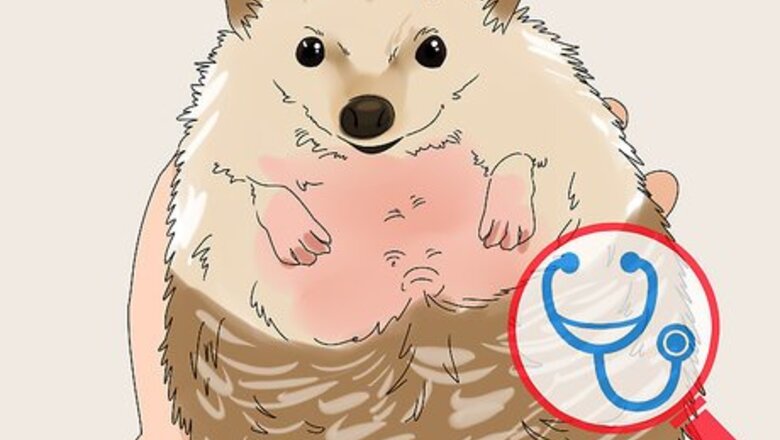
views
X
Research source
It can be heartbreaking to receive news your pet has a terminal disease, but you can do your best to keep your hedgehog comfortable and happy during the time it has left. Providing a warm, safe cage and proper care is key to helping a hedgehog with Wobbly Hedgehog Syndrome.
Seeking Veterinary Care
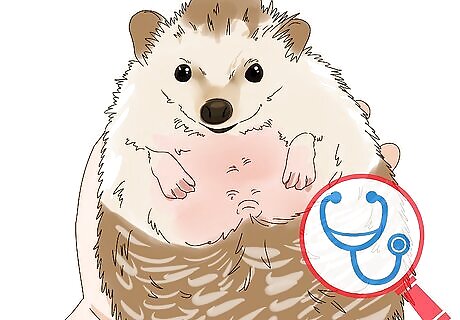
Recognize the symptoms of Wobbly Hedgehog Syndrome. Symptoms usually start when a hedgehog is between the ages of one year and 36 months old. If you notice any of the following symptoms, your hedgehog may have Wobbly Hedgehog Syndrome: Swaying and instability while standing still Tremors Regularly falling to one side Seizures Weakening muscles Partial paralysis of some limbs Muscle atrophy Slow progressive weight loss
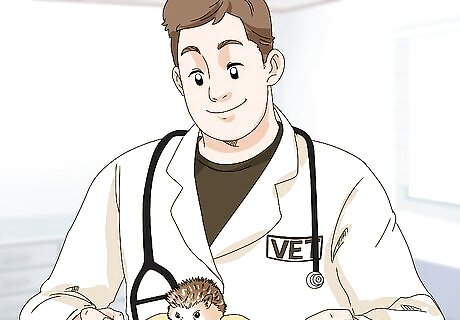
Find a vet with experience treating exotic animals. If you don't already have a vet, you should find one as soon as you notice symptoms of Wobbly Hedgehog Syndrome. Hedgehogs are considered exotic pets, so you'll need to find a vet in your region that treats exotic animals. You can look for a vet online or search the local yellow pages. Pet stores that sell exotic pets or hedgehog breeders often offer vet recommendations. If you're still in contact with the store or breeder where you bought your hedgehog, reach out to them for recommendations.

Get a diagnosis. The symptoms of Wobbly Hedgehog Syndrome can be caused by other neurological problems. However, keep in mind that a definitive diagnosis can only be confirmed using a necropsy after death. Your vet will likely need to take x-rays and conduct blood work to rule out other issues and get a working diagnosis.

Discuss a care plan with your vet. It's never easy to hear your pet has a terminal condition. The more information you know about the progression of the disease, the better. Talk to your vet about your hedgehog's life expectancy and ask what you can do to slow the progression of symptoms. Your vet may have specific recommendations for your hedgehog's diet and habitat depending on the stage of its illness.
Treating Symptoms

Up your hedgehog's vitamin E intake. In some cases, an increase in vitamin E may minimize or hide the severity of the symptoms of Wobbly Hedgehog Syndrome. However, vitamin E will not slow down the disease. Strive to feed your hedgehog a diet rich in vitamin E, but keep in mind that this is only a temporary measure to help your hedgehog. Provide vitamin E rich foods, such as sunflower seeds, almonds, pine nuts, kiwi, and mangoes. Talk to your vet about introducing a vitamin E supplement into your hedgehog's diet. Some vets may recommend a supplement to slow the symptoms of Wobbly Hedgehog Syndrome.
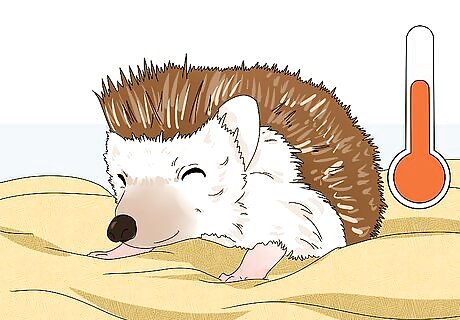
Keep your hedgehog warm. A warm atmosphere will keep your hedgehog comfortable as symptoms progress. Keep your hedgehog in a warm area of your home, free from drafts and cold air. Provide extra bedding and blankets so your hedgehog can stay warm.
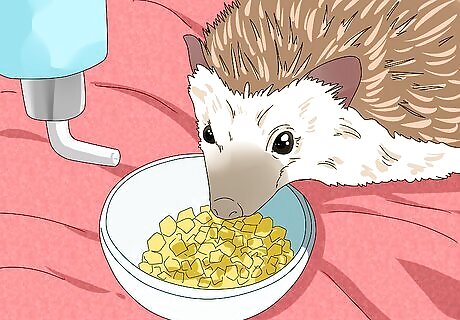
Make sure food and water are within reach. Wobbly Hedgehog Syndrome can make it difficult to access food and water. Keep food and water in easy-to-reach places in your hedgehog's cage. If your hedgehog tends to sleep in a particular area of the cage, keep its food and water there so it can eat and drink without moving too much.

Clean your hedgehog more frequently. Hedgehogs with Wobbly Hedgehog Syndrome have a reduced ability to groom themselves. They also get messy easier due to tremors. Clean your hedgehog more frequently to help it stay comfortable. Wash your hedgehog in a sink or tub filled with two to four inches of warm water. Rub a dime-sized dollop of baby shampoo over your hedgehog's back, belly, and feet and then rinse your hedgehog with clean water. When you're done bathing your hedgehog, gently pat it dry with a clean, dry towel. If your hedgehog has trouble getting up or is constantly laying down, then he may get bedsores. These will require treatment. You may also be able to minimize sores and rashes by keeping your hedgehog clean and dry.
Making Decisions about End of Life Care

Be honest about your ability to care for your hedgehog. As the disease progresses, your hedgehog's quality of life will decline. At a certain point, your hedgehog may struggle to move and have great difficulty eating and drinking. The specialized care required may get emotionally and financially taxing. If you are not able to provide your hedgehog care, and its quality of life is low, it may be time to start considering euthanasia.

Recognize when your hedgehog is paralyzed. Most hedgehogs will become completely paralyzed within a few months of diagnosis. Paralysis starts with the rear legs and then moves to the front legs. This is usually the last stage of the disorder and it's important to recognize when your hedgehog has completely lost mobility so you can make end of life decisions.
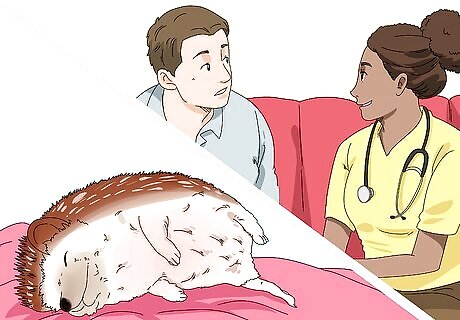
Talk over euthanasia with your vet. Euthanizing a pet is never an easy decision. However, many owners opt to euthanize hedgehogs with Wobbly Hedgehog Syndrome once they become paralyzed. Make an appointment with your vet and have a frank talk about how your hedgehog's disease is progressing and whether there's hope for improvement. If you opt for euthanasia, your vet will talk the procedure over with you slowly and carefully. The decision to euthanize a pet is very personal. Take as much time as you need to make the decision that's right for you and your hedgehog.


















Comments
0 comment